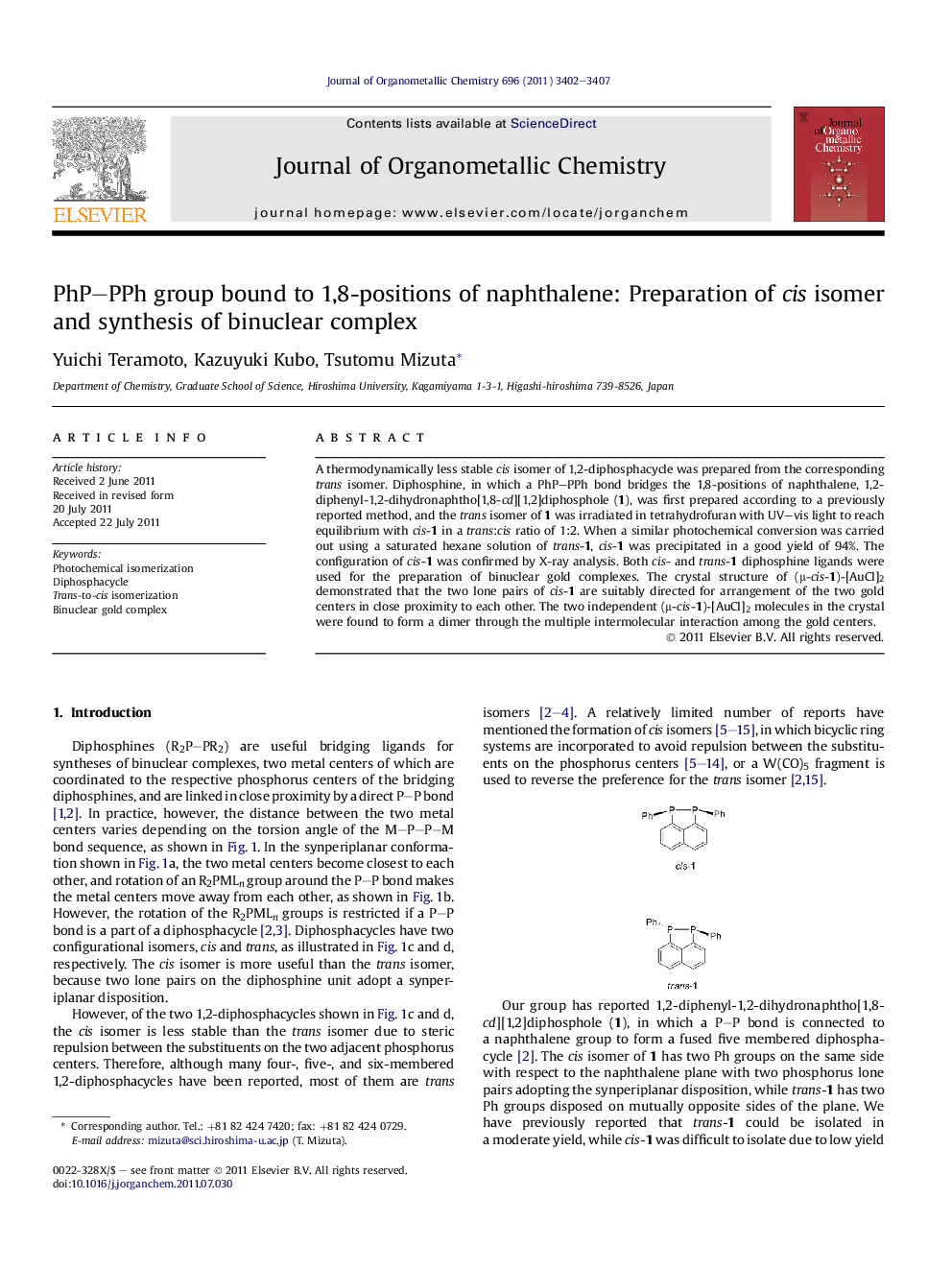| Article ID | Journal | Published Year | Pages | File Type |
|---|---|---|---|---|
| 1323718 | Journal of Organometallic Chemistry | 2011 | 6 Pages |
A thermodynamically less stable cis isomer of 1,2-diphosphacycle was prepared from the corresponding trans isomer. Diphosphine, in which a PhP–PPh bond bridges the 1,8-positions of naphthalene, 1,2-diphenyl-1,2-dihydronaphtho[1,8-cd][1,2]diphosphole (1), was first prepared according to a previously reported method, and the trans isomer of 1 was irradiated in tetrahydrofuran with UV–vis light to reach equilibrium with cis-1 in a trans:cis ratio of 1:2. When a similar photochemical conversion was carried out using a saturated hexane solution of trans-1, cis-1 was precipitated in a good yield of 94%. The configuration of cis-1 was confirmed by X-ray analysis. Both cis- and trans-1 diphosphine ligands were used for the preparation of binuclear gold complexes. The crystal structure of (μ-cis-1)-[AuCl]2 demonstrated that the two lone pairs of cis-1 are suitably directed for arrangement of the two gold centers in close proximity to each other. The two independent (μ-cis-1)-[AuCl]2 molecules in the crystal were found to form a dimer through the multiple intermolecular interaction among the gold centers.
Graphical abstractDiphosphine, in which a PhP–PPh bond bridges the 1,8-positions of naphthalene, was found to undergo photochemical trans-to-cis isomerization. The cis isomer obtained was used as a bridging ligand for binuclear complexes with two metal centers in close proximity.Figure optionsDownload full-size imageDownload as PowerPoint slideHighlights► Cyclic diphosphine with cis configuration was prepared. ► Trans-to-cis isomerization was carried out by photochemical reaction. ► Cis diphosphacycle was found to be useful for preparation of binuclear complex.
